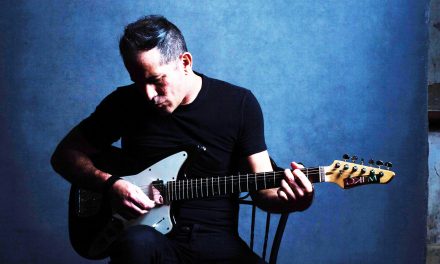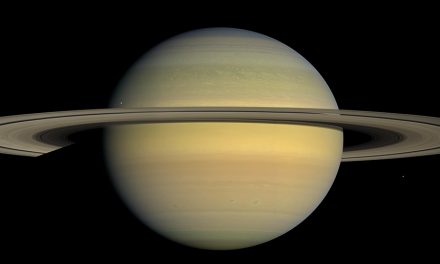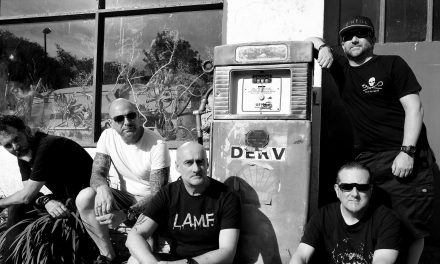There’s something going on, I’m not sure it’s what people have paid their hard earned for, but the rising tension is impossible to ignore. The singer in the support act had been playing on the crowd’s impatience. Taunting and winding them up mercilessly. Now all of a sudden he was bathed in a sickly green spotlight, looking like he’d been dipped in nuclear waste, before starting to mime throttling himself in slow motion. But I’m getting ahead of myself…
Summer of 1976 is rightly remembered for its drought and intense heat, as well as being the year of punk’s breakthrough. May already felt like July or August as I’d struggle into work on the cramped sweaty tube and back again in the evening. We lived not too far up the hill from the Roundhouse, and I could see the place every day as I came out of Chalk Farm tube. The Roundhouse had mapped a few significant times in my life – wild eyed Family tearing the place apart as ginormous canvas breasts inflated behind them disgorging white gunk, 1970 maybe. An earlier school outing to see Hamlet, redeemed by transparently nightie’d Marianne Faithfull as Ophelia.
The last time we’d been, almost exactly a year before to see Man – a guaranteed cool early 70’s band – with legendary Quicksilver Messenger Service guitar hero John Cipollina. It should have been a great evening, but the sound was crap, the place was rammed and stuffy, and maybe expectations were a bit too high. In addition it was often hard to see the stage for the massed hangers on either side. A few years earlier they’d have looked the epitome of California cool, but now the cowboy hats, fringed jackets, unisex ponytails, long dress’n’baby ensembles looked more like the residue of a scene that was in the process of winding up & moving on.
By contrast it felt like we’d been in training for the Patti Smith gig since the winter before. “Horses” came out in winter 1975, but as avid scourers of mags like “Creem” & “Andy Warhol’s Interview”, she’d been on our radar for a while. When our friend Andrew went to New York in the New Year, we begged him to bring back any tangible Patti product. Sure enough he returned with signed copies of “Seventh Heaven” and “Witt” (not that they lasted long before being nicked).
There were other little hints that she was going to be more than another passing musical flavour for us. Blue Oyster Cult were one of the outfits who saw us through the early 70’s gap years before punk. Leaning to the hard rock side of metal, they combined strange lyrics with a powerful sound that had nothing to do with the bluesy plod of most British rockers. Moreover she was credited on some of their songs. Thus we found that she was involved with the group’s Allen Lanier. Imagine our excitement at one of Blue Oyster Cult’s Hammersmith gigs when we spotted a familiar figure dancing down the front in her trademark black leather jacket. We so wanted to go and say hi, but torn between respect for her space and our own nerves, the moment was soon gone.
But that was the thing, the big difference – she might be a published poet and involved with rock stars, but Patti was a Fan, just like us. Lots of people put down the 60’s at that time, but she had that fan’s talent for infallibly homing in on the jewels among the crap. As shown by her choice of cover versions. Sure, we’d all dug “My Generation,” but it took a real savant to know about the treasures that lurked in soul & Tamla, like “Hunter Gets Captured By The Game” or the original “Time Is On My Side”.
Finally “Horses” came out in November 1975. We’d immerse ourselves word perfect in the album, along with the other meagre pre-punk pickings like “On the Beach”, “No Other”, Iggy, John Cale, Steely Dan. After that there were usually snippets in the NME to help build the anticipation, so we were aware that apart from the music she trailed all manner of hip connections and references, like Burroughs, Ginsberg. No flares, astrology or 60’s tie-dye granola trips there, just a spiritual link to the original Beat Generation, back again but Blank this time. And when she did reference the previous decade, especially in music, it was with an innate instinct for the Cool. Jimi, Brian Jones, Dylan, Velvet Underground, classic Stones.
Eventually I was able to escape the windowless back room office, and made my way home. My partner Jan had been building up to a crescendo of pre gig excitement all day, getting her hair just so, then going through yet another costume change, or suddenly asking me, “Should I wear a bra?”, closely checking Patti’s figure on the Horses cover
Then there were the drugs. I take no pride in it now, but our seemingly cool and carefree lives were controlled by our heroin addiction, and as you’ll see it’s relevant to the story later on. Still, we were on an upswing that summer and even had some coke as a treat. Jan quickly did her narcotic origami, fashioning 4 neat packets to receive our separate supplies for the night, and after a last intake we were off down the hill.
Camden was a different entity to the Notting Hill replica it now resembles. Even though we were up the opposite end from the grimy pubs and street drinkers around the tube station, there was always a layer of grime and a smell of traffic jams and overground railways. True, there were a couple of minor landmarks like Marine Ices, Dingwalls and Compendium books but overall the place was static and decaying. The council had long ago lost control of its housing stock, and despite grandiose names like Royal Hospital Avenue, whole blocks were squatted. We used to joke about “The Hampstead Triangle”, an area notionally bounded by Adelaide Road to the South, with Haverstock Hill & Fitzjohn’s Avenue forming long tapering sides that met up around Hampstead Village. This area was heavily squatted and rife with dealers and dopers of every description, although a couple of would-be communes held on as Sixties’ die hards with their macramé, meditation rooms and cooking rotas.
For once we got to a gig early, making our way through the usual touts outside and up the stairs to the main concourse, if that isn’t too grandiose a term. The door staff were surlier than usual, maybe put out by the different punk crowd compared to the usual Sunday beer, Mandrax and greatcoat crowd. Still we were in, and what’s more there was still loads of room. I was trying to decide on a vantage point half way back, where hopefully sound & vision would be just so, when Jan tugged my arm, “I don’t want to stand there. Let’s go down the front”
“I don’t want to stand there. Let’s go down the front”
Before long the place started to fill up. We assessed the situation and made a rapid trip to the toilets for a top up. Soon we were enclosed on all sides as people pressed round us. But no matter, we’d heard the key phrase and electric crackle, “Testing 1-2-3”. Music was imminent…
I’d noticed the Stranglers’ name as regulars on the live gig pages but that was about it. Looking back now – sadly a few days after the death of keyboard maestro Dave Greenfield – it’s striking that although it was still nearly a year to their first Top 20 hits like “Peaches”, “Go Buddy Go” & “Grip”, their set showed that all the key components of “Rattus Norvegicus IV” & “No More Heroes” were already in place. Soon we were nodding to each other in approval. Hey, the support act is really good too, whaddya know? At such close range Jean Jacques Burnel’s strident punchy bass lines were like a constant prod in the diaphragm at such close range, while Hugh Cornwell roved the stage like he belonged there, no humble newbie at the bottom of the ladder. A wash of Doorsian keyboards completed the picture as one future hit followed another, “Choosie Susie”, “Princess of the Streets” and our favourite, “Hanging Around”.
It was probably during the lascivious chorus of “Peaches” that I noticed our enthusiasm wasn’t shared generally. There were Stranglers fans there of course, but it was clear that most of the crowd were there for the main act and no-one else. During one of the between song tuning-up breaks, voices started to ring out, “Oi, get on with it!” along with ragged attempts at a slow handclap. Suddenly Jean Jacques bristled visibly & took the mic, “Get on with what?” The response stalled the heckler, but another voice took up the thread, “What you’re supposed to be doing!” “And that is…?” “Playing some bloody music!” “So that’s why we’re here in your opinion – we’ve got to play music for you? It’s our job to be your entertainers?”
Then Hugh joined in, deconstructing the argument further and dissecting the inane impatience, before announcing with a laugh,
“This is getting really dialectical!”
More cries and sneers burst forth from the crowd, less articulate this time.
For a while a song the crowd knew – “Walk on By” – pacified things. But it didn’t last long. I forget which song it was – “I Feel Like a ***”, “Tits”, “Peasant in the Big Shitty” maybe, and yes, they could be very provocative when they wanted to. You could even say that it was a bit adolescent, shock-the-parents stuff, especially for a couple of uni graduates but it was needed in the age of “Olias of Sunhillow” and Olivia Newton John.
It was probably “School Marm” that did it, Jean Jacques announcing,
“If you didn’t like that one, you’re going to really hate this”
Then Hugh snarling and contorting as he spat out the words, culminating in the auto strangulation/green spotlight moment.
A palpable disquiet and tension filled the air. A well-modulated voice cried out,
“This is rubbish! Get them off”
Followed by jeers of assent and counter cries from group loyalists. I’d seen the scenario so many times before – fans of headline act barracking the support, but this felt different. I’d never seen anyone react before by turning the ritual baiting into a dialectical debate. We’d commented to each other a few times at previous gigs how the audience acted like they were sat at home watching television – now there was a group stepping through the screen and defying their allotted role.
Was this what the Pit of an Elizabethan theatre had been like? None of the impenetrable invisible barrier that had so put me off theatre as a kid. Clearly the objectors would have preferred a trip to somewhere nicer like the ICA, rather than hauling out to the grimy old Roundhouse. Briefly the air crackled with confrontation, only dissipating when the Stranglers quit the stage, job done. They were back supporting the Clash a few months later. Not long after that they became chart regulars, with their first album coming out 11 months after we’d seen them. Most of the songs had already been in place and road tested for a long time, unlike many of their punk contemporaries who were caught between the demand of getting out there playing gigs and trying to come up with new material at the same time.
We took advantage of the between sets moving around to slip off for a discreet top up in one of the many dark dank recesses of the Roundhouse, half expecting to find the skeletal remains of a lost Pink Fairy. We forced our way thru the thickening crowd back to our place down the front, tension and expectation mounting all the time.
Finally Patti Smith arrived, beaming and overflowing with words. Ivan Kral took up position directly in front of us, looking cool and decadent with his feather cut hair and a sharp pale suit, topped off with a very cool silver horse badge on his lapel. Once he’d plugged in, the first firmly struck chord hit us like a wave on the beach, the first taste of a night doused in rippling swathes of glorious surf guitar. Forgive me for not being able to remember exactly what she was wearing nearly 50 years later, tho I’m pretty sure it was the white top and black pants as on the album cover, or for not recalling the exact topics of her between song hyper excited raps, ideas and words tumbling over each other in their rush to get out, a crazy COOL Babel cut up of Patty Hearst, Watergate, Wilhelm Reich and other hip bush telegraph stuff, Radio Ethiopia made flesh.
The group started with their usual warm up number and scene-setter, a lively chug through the Velvet Underground’s “We’re Going To Have a Real Good Time Together” – a perfect reference number for where they were from and what they aspired to. Cover versions were a big part of the group’s make up. Sadly we weren’t to hear their take on “Pale Blue Eyes”, or “Time Is On My Side” (a great cover choice, so evocative of playing the Stones’ first album in my bedroom as a kid).
From then on things got faster and more intense, a lope through “Redondo Beach” quickly followed by our favourite, “Free Money”. Jan’s eyes sparkled in rapture as Patti skipped from side to side of the stage while Lenny Kaye held down the music, while looking almost the least punk in the house with his long hair and glasses. The Punk Uniform police were still in the future. Another impeccably hip 60’s reference came with “Privilege”, nodding to the Paul Jones/Chrissie Shrimpton rock’n’politix film.
Then we moved into less familiar space with four tracks from the next album, “Radio Ethiopia” – “Pissing in a River”, “Pumping”,” Ain’t It Strange” & “Radio Ethiopia” itself. The previous night’s set had only featured the title track, leaning much more on “Horses” & covers. By now I was starting to enjoy the sheer physicality of the music so close to the front of the stage. Every time Ivan Kral stepped forward to hit an FX pedal oh so stylishly it felt like having a bucket of sound wash over us. From our position the other musicians were hard to see but Patti was practically in touching distance most of the time.
I’d become desensitized by the crush, but gradually realised Jan was nudging me in the side and trying to make eye contact. As ever she was after More Drugs. But the stash was stuck fast in my shirt pocket, inaccessible. I shrugged my shoulders as much as was possible & tried to indicate with downcast eyes what the problem was. There was no way I was going to be involved in another battle through the crowd and shouted into her ear to forget it. She looked crestfallen for a second, then managed to turn enough to free one of her arms and reach up to my shirt pocket, skilfully slipping a couple of fingers in & extracting a couple of the wraps.
We looked at each other, then at the dusty bit of stage in front of us. No choice. If we’re going to do it, this is it. No mirrors, razor blades or fancy coke spoons tonight. Just tip a couple of heaps out into the stagedust, fashion a straw from one of our tickets, hoover it up and try not to think too much of the crap hitting our synapses.
Then suddenly out of the corner of my eye I noticed a dervish like swirl of movement heading our way, and for the briefest wondrous moment our eyes and minds connected as Patti swooped our way, made visceral eye contact, beaming madly at our dedication to getting high whatever the obstacles.
We got our breath back with a brief return to “Horses” in the shape of “Land”, but even that soon mutated into a reprise of “Ain’t It Strange”. And then a final assault on the walls of the city, with a joyous and raucous assault on “Gloria” and “My Generation”, Van Morrison and Pete Townshend repurposed and dragged from the nostalgia zone through the barbed wire and born again for the new decade. It was one of those transcendent times when music provides a kind of out of body experience, a collective loss of ego by the audience, a fleeting escape from mundanity and obligation… and then they were gone. House lights soon turning the magical stage powder back to plain old dust.
We staggered out into the clammy night, pausing at the top of the Roundhouse stairs long enough to gather ourselves before returning to the world of traffic lights and timetables. There was no need to talk or analyse, we both knew we’d witnessed something truly out of the ordinary.






Recent Comments